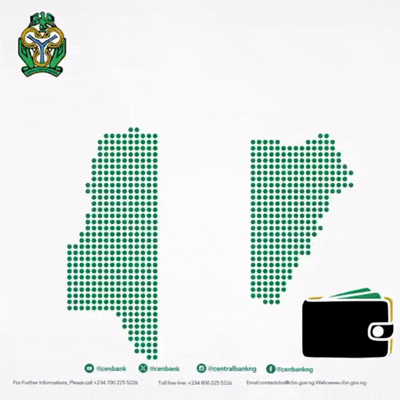* Yen Steady, Dollar Dithers As Traders Await BOJ, Fed Decisions
Oil prices slid on Wednesday after Russia agreed to U.S. President Donald Trump’s proposal that Moscow and Kyiv stop attacking each other’s energy infrastructure temporarily, which could lead to more Russian oil entering global markets.
This is even as yen steadied on Wednesday while the dollar struggled to regain some lost ground ahead of key rate decisions from the Bank of Japan (BOJ) and the Federal Reserve later in the day.
Consequently, according to Reuters, brent crude futures were down 12 cents, or 0.2%, at $70.44 a barrel by 0106 GMT. U.S. West Texas Intermediate crude (WTI) lost 15 cents, or 0.2%, to $66.75.
Russian President Vladimir Putin agreed on Tuesday to stop attacking Ukrainian energy facilities but stopped short of endorsing a full 30-day ceasefire that Trump hoped for.
Russia is one of the world’s top oil suppliers, but its output has waned since the beginning of the war, which resulted in sanctions on Russian energy.
A potential ceasefire could lead to an easing of sanctions, which might raise oil supply and ease prices, analysts said.
U.S. tariffs on Canada, Mexico and China have raised recession fears, which also weighed on oil prices as that would have a dampening effect on demand for crude.
But the declines in oil prices were limited by ongoing turmoil in the Middle East.
Trump vowed to continue his country’s assault on Yemen’s Houthis and said he would hold Iran responsible for any attacks carried out by the group that has disrupted shipping in the Red Sea.
Israeli air strikes in Gaza, meanwhile, killed at least 200 people, Palestinian health authorities said, which ended a week-long ceasefire and elevated risks of oil supply being threatened from the broader region.
U.S. crude oil stocks data, meanwhile, painted a mixed picture, with crude stocks rising while fuel inventories fell.
Crude stocks were up 4.59 million barrels in the week ended March 14, market sources said, citing American Petroleum Institute figures on Tuesday. Gasoline inventories fell by 1.71 million barrels and distillate stocks were down 2.15 million barrels, they said.
ALSO READ:Tension As Explosion Rocks Crude Oil Pipeline In Rivers
Yen Steady, Dollar Dithers On Expectations Of BOJ, Fed Decisions
The yen steadied on Wednesday while the dollar struggled to regain some lost ground ahead of key rate decisions from the Bank of Japan (BOJ) and the Federal Reserve later in the day.
Overnight, Israeli airstrikes pounded Gaza and killed more than 400 people, U.S.
President Donald Trump and Russian President Vladimir Putin failed to reach an agreement on a Ukraine ceasefire and Germany’s outgoing parliament approved plans for a massive spending surge.
But currency moves were largely subdued as traders were hesitant to take on fresh positions ahead of Wednesday’s two main central bank events, particularly the Fed’s.
The euro did scale a five-month high of $1.0955 in the previous session and last traded near that level at $1.0937, as investors were optimistic the move in Germany could revive economic growth and scale up military spending for a new era of European collective defence.
ALSO READ:Full Text Of President Bola Tinubu’s Declaration Of State Of Emergency In Rivers State
“This is a historic fiscal regime shift, arguably the largest since German reunification,” said Robin Winkler, chief German economist at Deutsche Bank Research.
“Yet, as with reunification, a fiscal expansion does not guarantee success: the next government will need to deliver structural reforms to turn this fiscal package into sustainable growth.”
Elsewhere, the yen was little changed at 149.32 per dollar, as investors awaited the conclusion of the BOJ’s two-day monetary policy meeting, where the central bank is expected to stand pat on rates.
Focus will be on governor Kazuo Ueda’s post-meeting briefing for clues on how soon the BOJ could next raise rates, a decision complicated by the contrast between benign domestic data and uncertainty caused by Trump’s trade policy.
“We expect the BOJ to deliver a hold with some hawkish messaging off the back of strong inflation and wage growth expectations,” said Carl Ang, fixed income research analyst at MFS Investment Management.
“The BOJ appears broadly comfortable with bond yields rising in response, implying higher expectations for the terminal rate and more of a normal yield curve.”
Sterling last bought $1.30, standing just a whisker away from its four-month high of $1.3010 hit in the previous day.
The Australian dollar ticked up 0.02% to $0.6362 after falling 0.4% overnight as risk appetite stayed cautious, while the New Zealand dollar slipped 0.05% to $0.5818.
Against a basket of currencies, the dollar edged slightly higher to 103.33, though was languishing near Tuesday’s five-month low of 103.19.
The dollar has fallen nearly 4% for the month, pressured by Trump’s erratic tariff moves and as fears of a recession in the world’s largest economy mount.
The Fed’s policy decision later on Wednesday will be crucial for investors eager to know what the central bank makes of Trump’s policies and their impact on the U.S. economy, and how that would translate to the rate outlook.
Fed policymakers are widely expected to keep rates on hold, and will also release new economic projections at the conclusion of the meeting later in the day.
Traders are currently pricing in nearly 60 basis points of Fed rate cuts by the year end.
“The March FOMC meeting will likely be all about policy uncertainty. The Fed will almost certainly stay on hold, emphasising patience over panic,” said analysts at Bank of America Securities.
“The (Summary of Economic Projections) forecasts and distribution of risks are both likely to reflect stagflation: weaker growth and higher inflation.”














